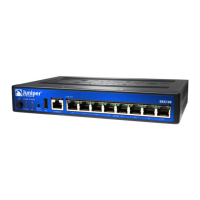Table 24: Quick Configuration Set Up Summary (continued)
Your ActionFunctionField
To add an IP address, type it in the box to the left
of the Add button, then click Add.
To delete an IP address, click on it in the box above
the Add button, then click Delete.
Specifies a DNS server that the services
gateway can use to resolve hostnames into
addresses.
DNS Name Servers
To add a domain name, type it in the box to the left
of the Add button, then click Add.
To delete a domain name, click on it in the box
above the Add button, then click Delete.
Adds each domain name that includes the
services gateway to the configuration so that
each domain is included in a DNS search.
Domain Search
Type a 32-bit IP address in dotted decimal notation.Defines a default gateway through which to
direct packets addressed to networks not
explicitly listed in the routing table.
Default Gateway
Type a 32-bit IP address and prefix length in dotted
decimal notation.
Defines a reserved IP address that is always
available on the services gateway. If no address
is entered, this address is set to 127.0.0.1/32.
Loopback Address
Management Access
To enable Telnet access, select the box.Allows remote access to the services gateway
using Telnet.
Allow Telnet Access
To enable JUNOScript access over cleartext, select
the box.
Allows JUNOScript to access the services
gateway using a protocol for sending
unencrypted text over a TCP connection.
Allow JUNOScript
over Clear-Text
Access
To enable SSH access, select the box.Allows remote access to the services gateway
using SSH.
Allow SSH Access
Related Topics ■ SRX100 Services Gateway Basic Connectivity Overview on page 55
■ Connecting an SRX100 Services Gateway to the J-Web Interface on page 60
■ Displaying Basic Connectivity Configurations for the SRX100 Services Gateway
on page 73
■ Configuring Basic Settings for the SRX100 Services Gateway with a Configuration
Editor on page 70
Configuring Basic Settings for the SRX100 Services Gateway with a Configuration Editor
To establish basic connectivity on the services gateway:
1. Identify the services gateway.
2. Connect it to the network.
3. Specify basic network settings.
In a typical network, the services gateway has the basic settings listed in Table 25
on page 71. Determine the values to set on the services gateway in your network.
70 ■ Configuring Basic Settings for the SRX100 Services Gateway with a Configuration Editor
SRX100 Services Gateway Hardware Guide

